



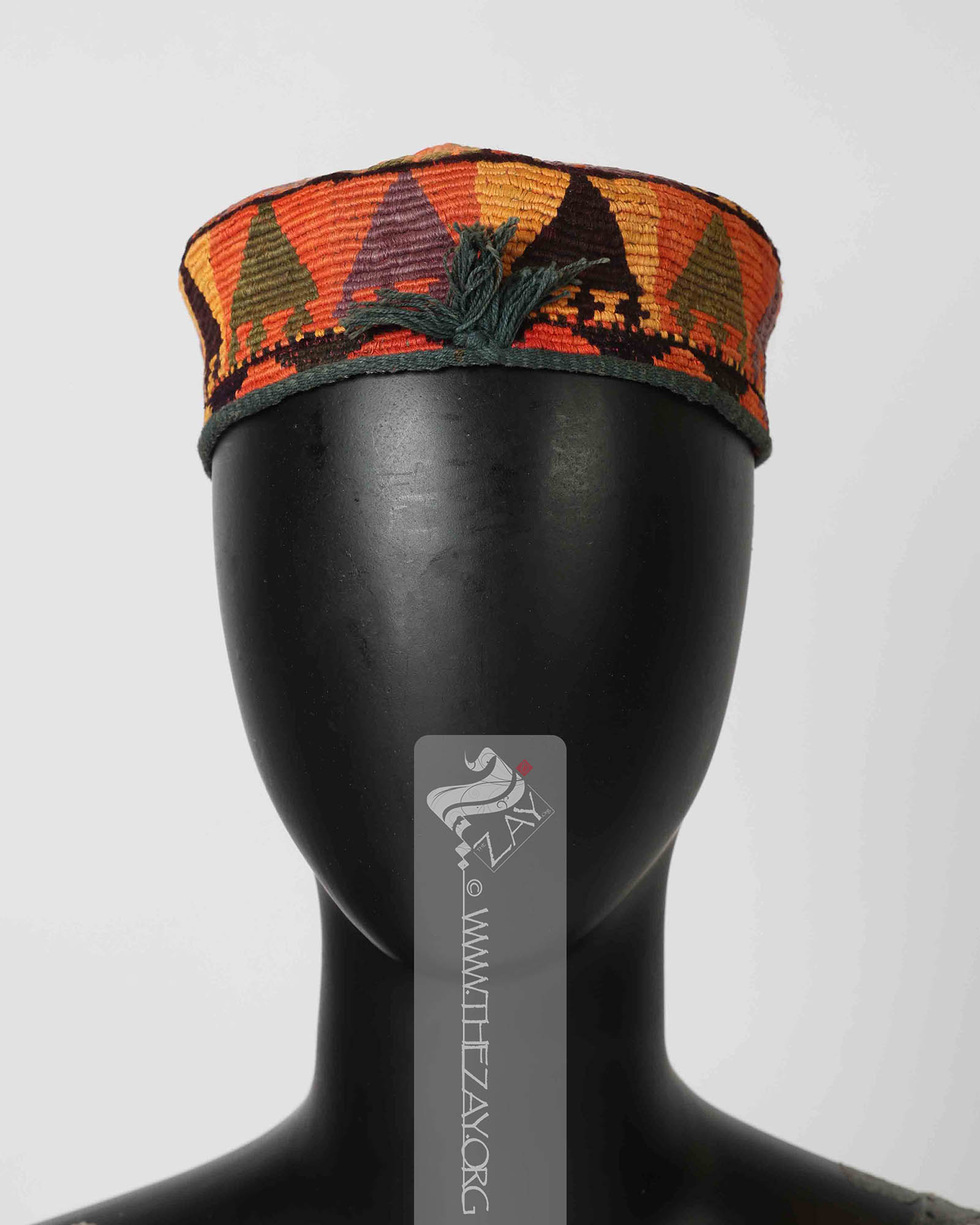
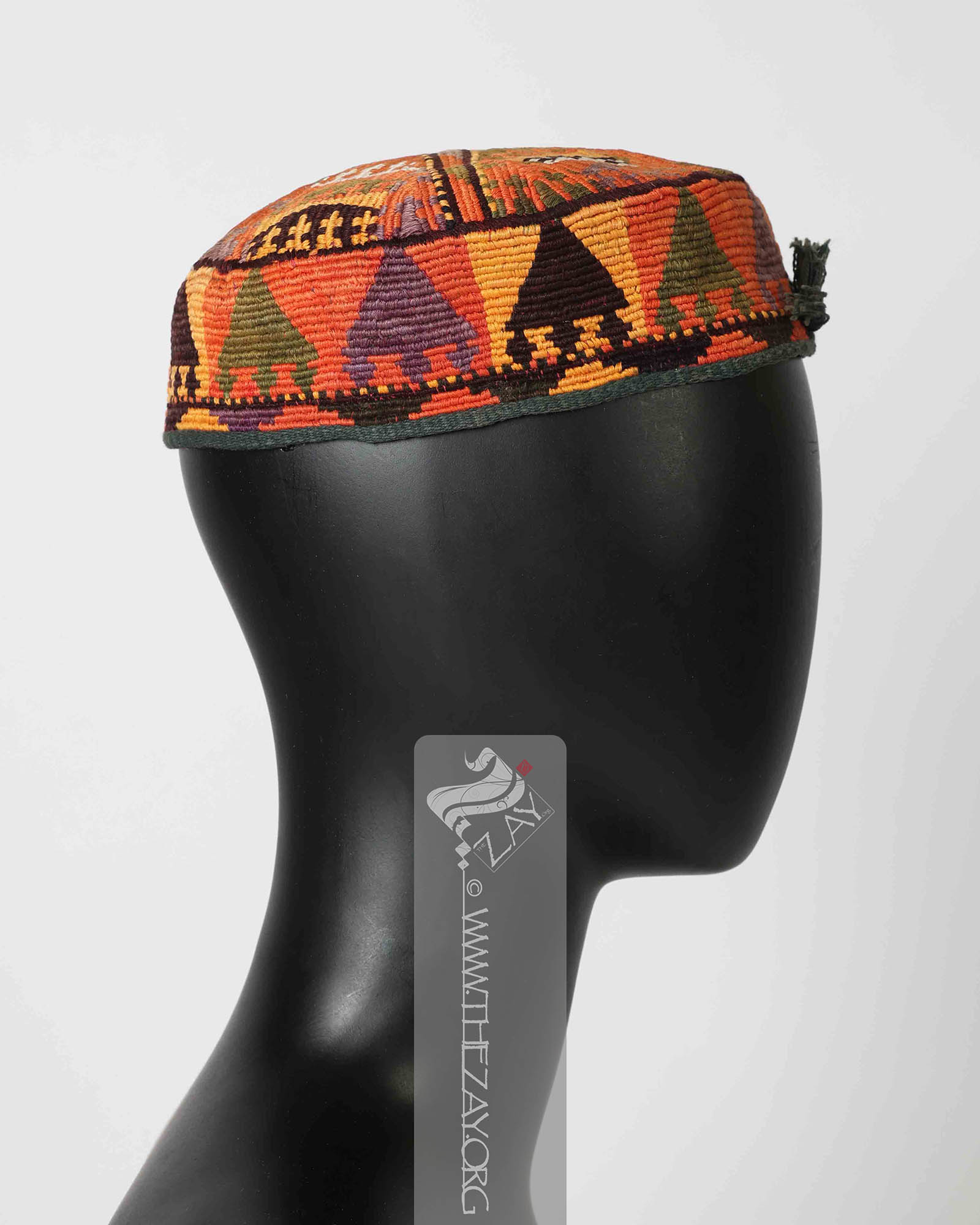
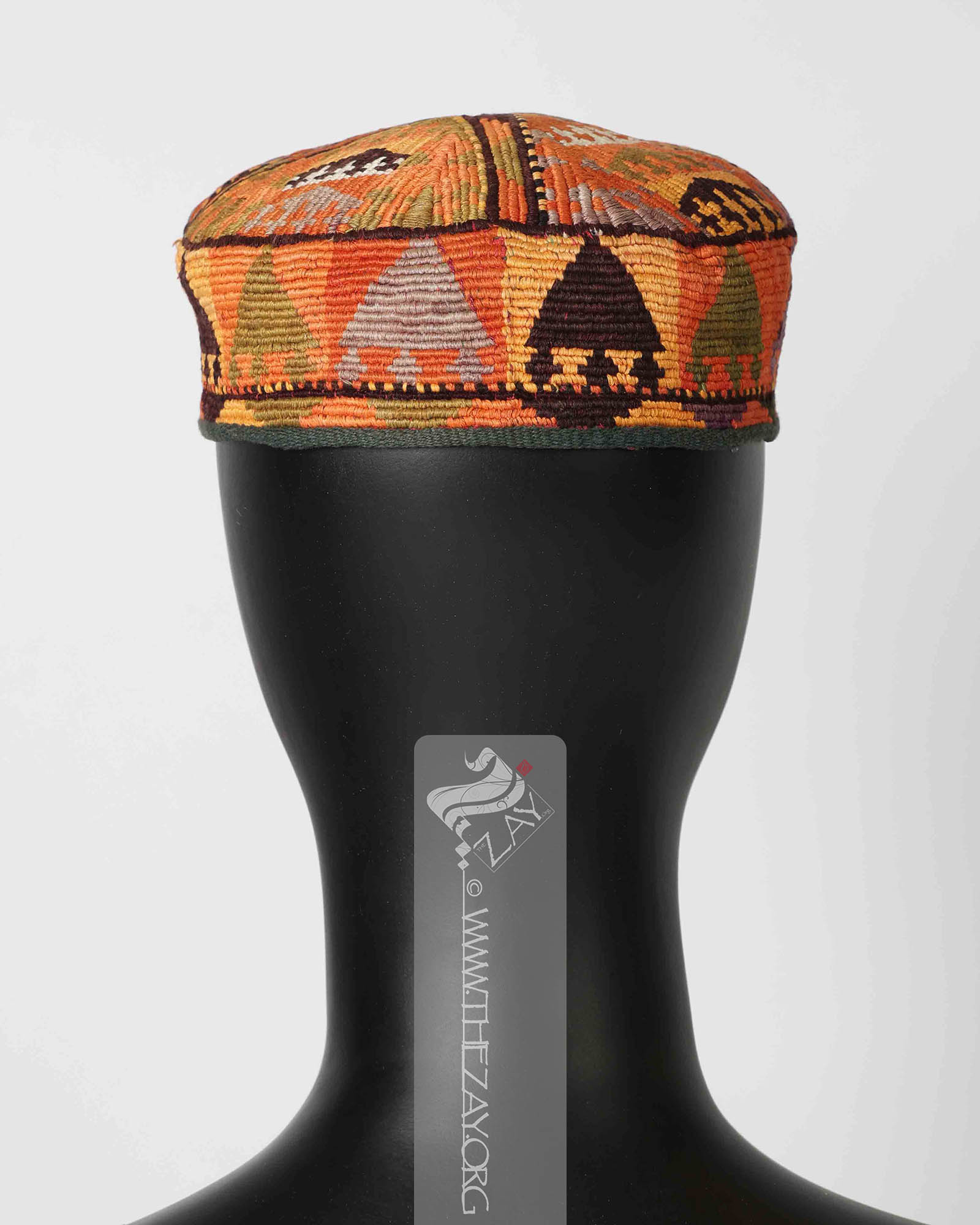
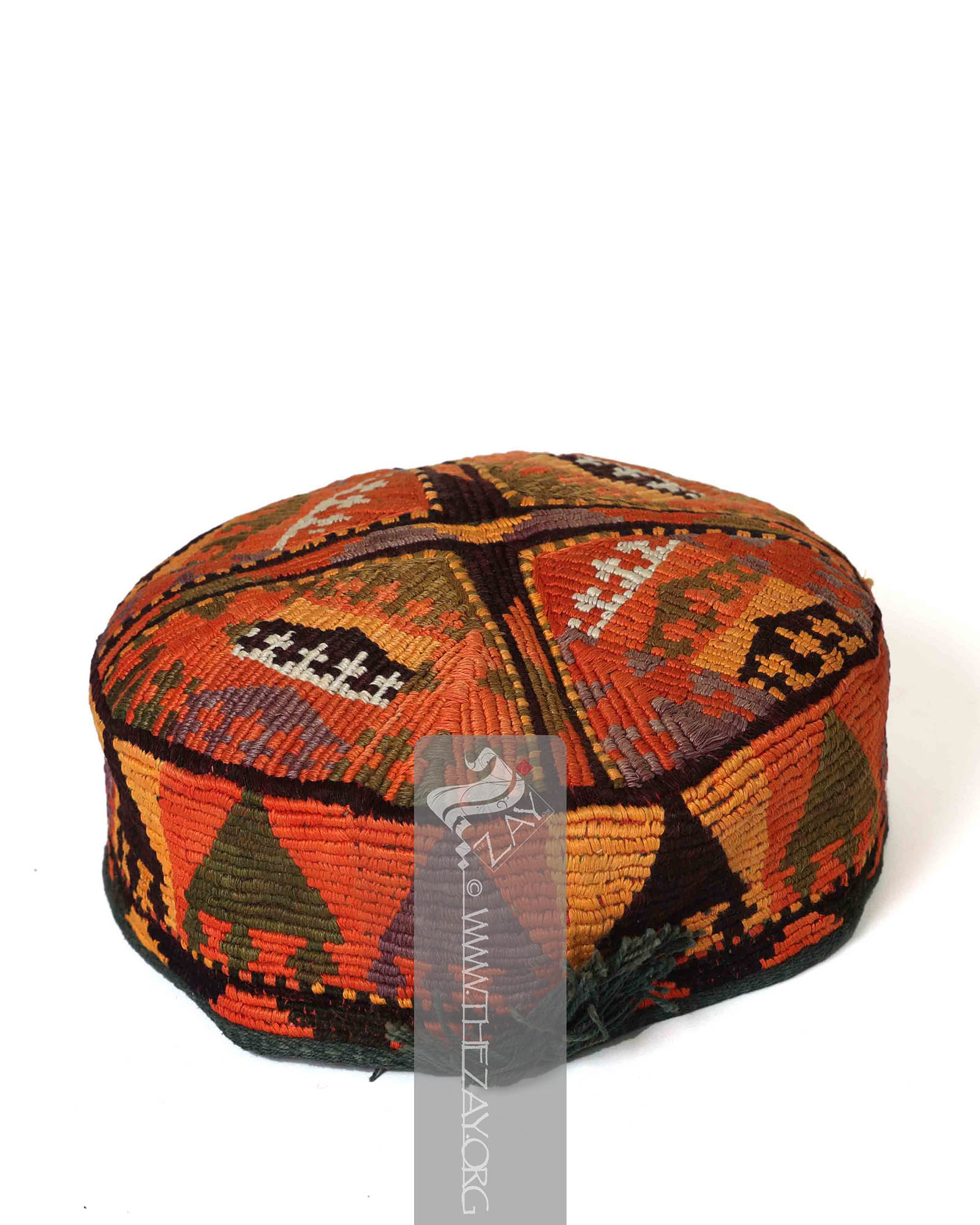
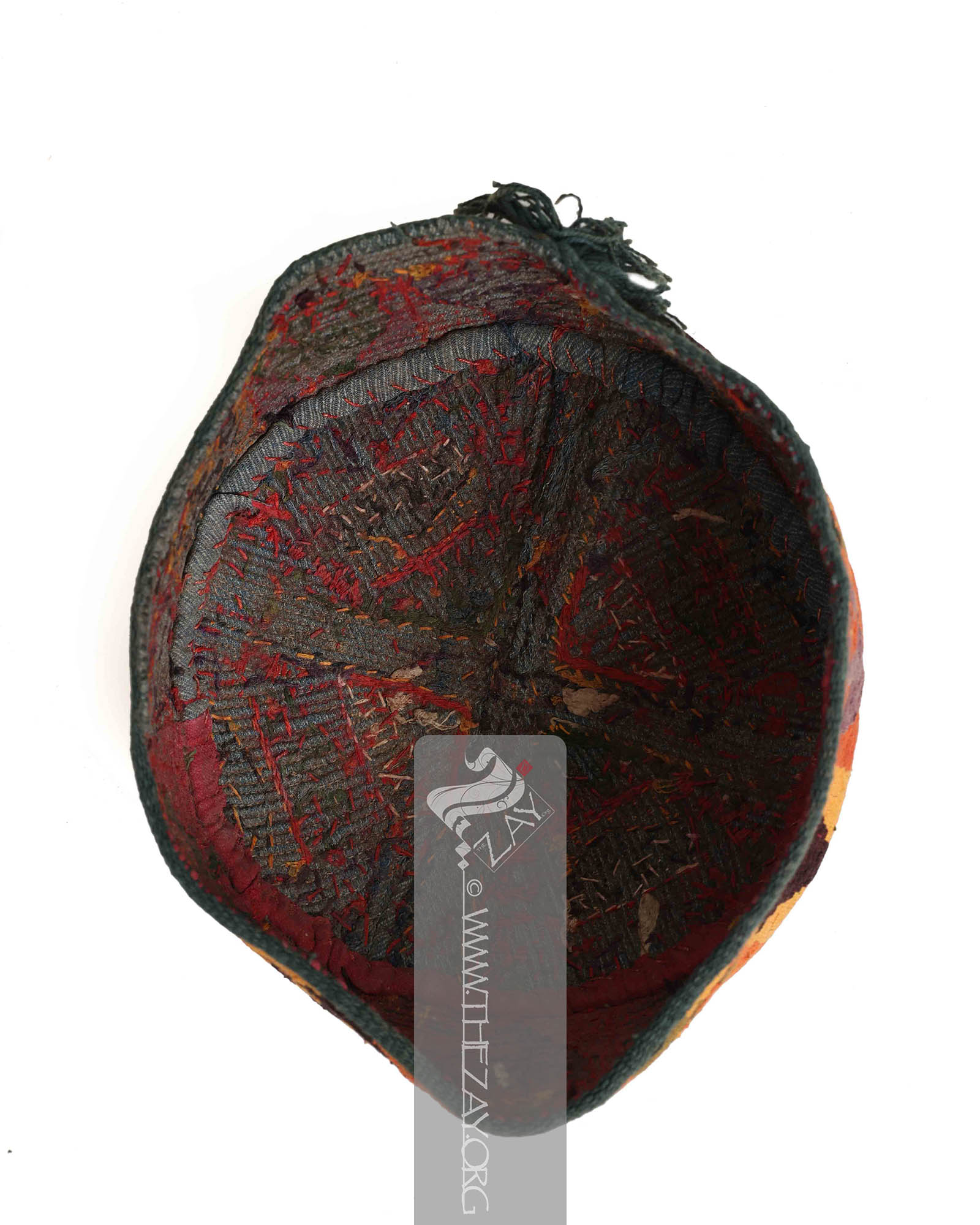
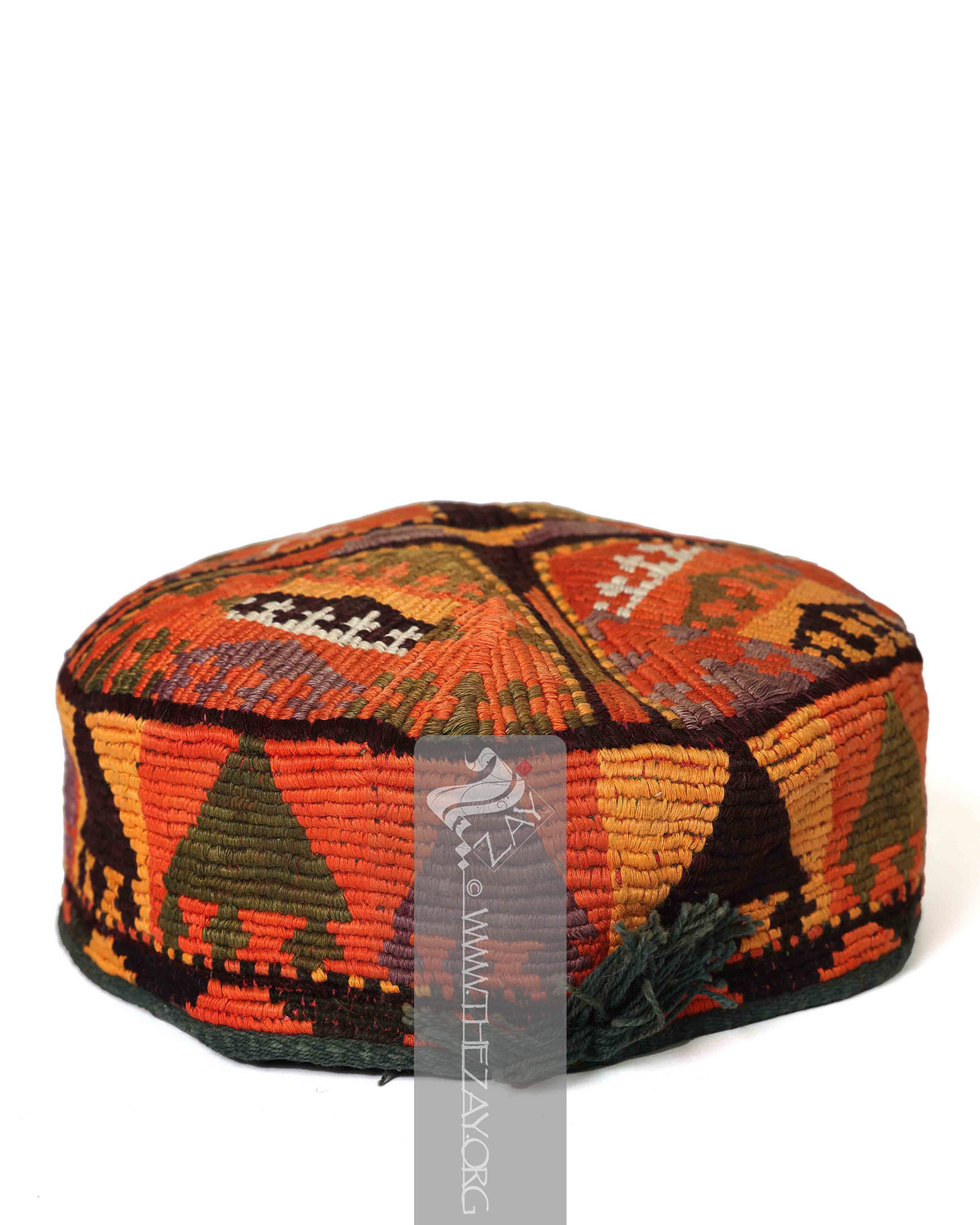
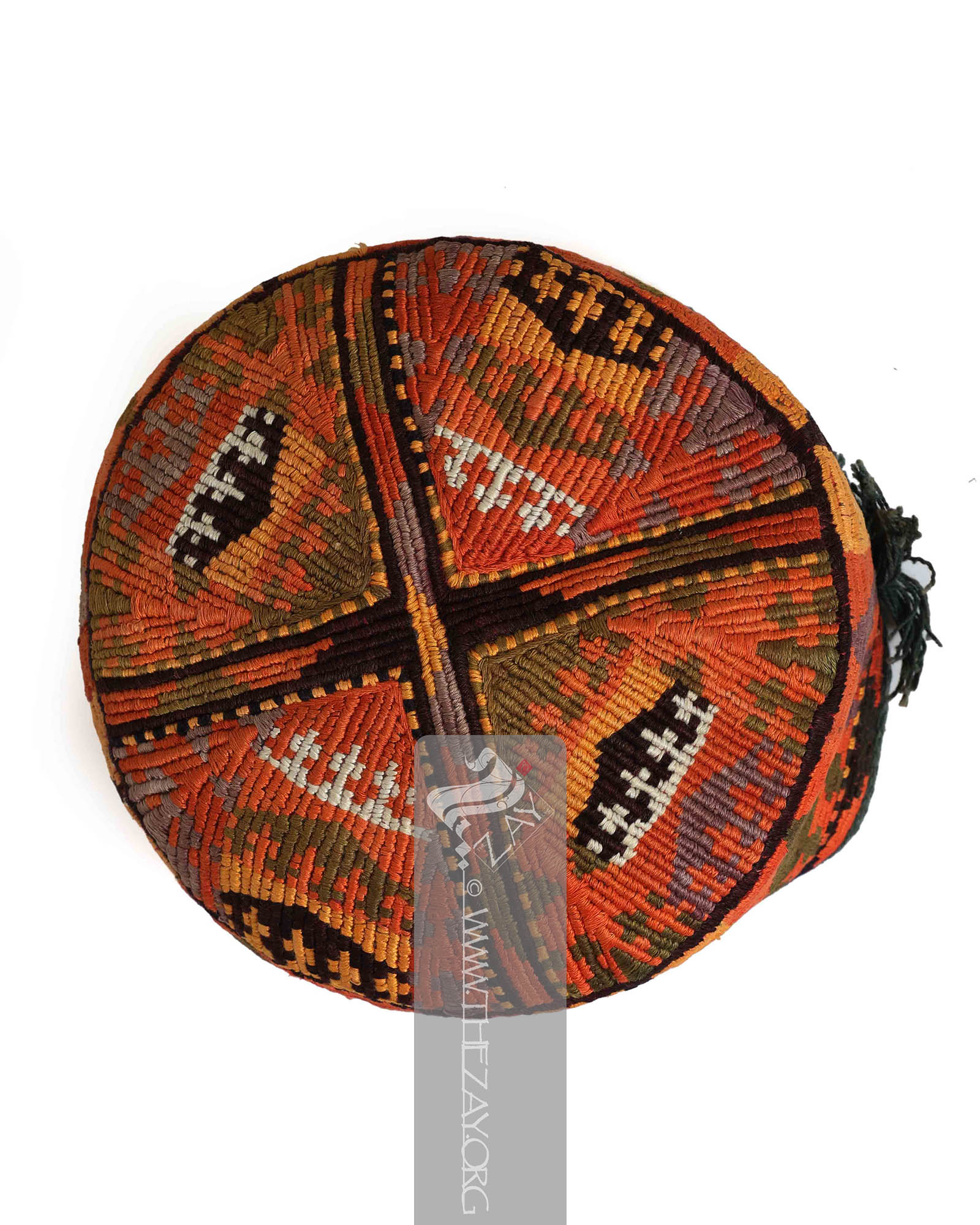
| Local Name | Tahiyah, taqiyah |
| Object Category | Headwear |
| Gender | Female |
| Place Of orgin | Asia |
| Region | Central Asia |
| Object Range | Uzbekistan, Turkmenistan, Tajikistan, Kazakhstan, Kyrgyzstan, Azerbaijan, Afghanistan, Iran, India, Pakistan, China, Russia, Turkey |
| Dimensions | Length: 7 cm Width: 24 cm |
| Materials | Silk Wool |
| Technique | Hand Stitched Woven |
| Color | |
| Motif | Geometric Abstract |
| Provenance | Purchased, Augusta Auction Company, Vermont 2023 |
| Location | The Zay Zay: (Arabic: costume, Pl. azyaā’), a set of clothes in a style typical of a particular country or historical period. Initiative |
| Status | In Storage |
| ZI number | ZI2023.501012.3 ASIA |
Object Note
Part of a set constituting of five more items – two pieces of (ZI2023.501012.1 TUNISIA, ZI2023.501012.2 ASIA, ZI2023.501012.4 ASIA, ZI2023.501012.5 OMAN, and ZI2023.501012.6 ASIA).
Object History
This colourful women’s skull cap was purchased along with five more items by Dr. Reem Tariq
Ṭariq: (Arabic; Synonym: tulle_bi_talli
Tūlle_bi_tallī: (French: Tulle – a city in France where fine material for veil was first made; Turkish: tel – wire; Synonym: tariq; talli; badla; khus_dozi ), series of small metal knots made on a woven net ground as embellishment. The term is commonly used in the North African Arab region specifically in Egypt. Ṭariq: (Arabic; Synonym: tulle_bi_talli
Tūlle_bi_tallī: (French: Tulle – a city in France where fine material for veil was first made; Turkish: tel – wire; Synonym: tariq; talli; badla; khus_dozi ), series of small metal knots made on a woven net ground as embellishment. The term is commonly used in the North African Arab region specifically in Egypt.
Object Features
This is a typical Turkmen woman’s skull cap or (tahiyah)/(taqiyah
Ṭāqīyah : (Arabic: cap; Synonym: Ṭāgīyah, Ṭā’īyah), a small round skull cap worn by the Arab communities of the Middle Eastern and North African countries. It is worn by both men and women and has several regional versions and is also popular amongst the Muslim communities of Central, South, and Southeast Asia.
The previous collector had also attributed this piece as a men’s accessory, however, Turkmen men’s caps typically come with a conical crown, while flat crown caps like this are worn by women.
It is hand-woven in an array of colourful silk and woollen threads – orange, yellow, white, lavender, green, and purple – depicting abstract and geometric designs. It has a little tassel at the back in (indigo Indigo: (Latin: Indigo – India, synonym: nil Nīl: (Latin: indigo), Arabised term for Indigo, a natural dye belonging to the ‘Indigofera Tinctoria’ species of plants that have been cultivated in East Asia, Egypt, India, and Peru since antiquity. According to Pliny the Elder, it was named after India as it was the source of the dye.), a natural dye belonging to the ‘Indigofera Tinctoria’ species of plants that has been cultivated in East Asia, Egypt, India, and Peru since antiquity. According to Pliny the Elder, it was named after India as it was the source of the dye. ) blue wool. It is very similar in style to the silk skull caps typical of Bokhara, Uzbekistan, which are far removed from the typical black skull caps of Uzbek men.
The base of the cap is possibly a thick layer of felt which has been thickly embroidered with silk threads. The piece is completely hand-stitched and unlined.
Links